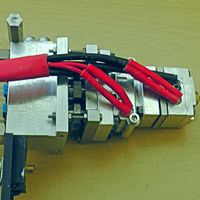The most helpful post you'll read today
-
@phaedrux Yep. Fair point. I stand corrected.
-
@gloomyandy oy, it used to say lead screw
 I'm glad it's fixed now!!
I'm glad it's fixed now!! -
-
@zapta I've heard that too, but I don't know how it's supposed to converge if it over-shoots or under-shoots, depending on the inaccuracy.
-
Yep. That’s how I always had it set up. I didn’t realize that’s what was written down differed from that, because I just did what was logical

-
@gnydick said in The most helpful post you'll read today:
I'm trying to get my head around what is being discussed in this thread. But I'm coming from a position where my bed is mechanically flat and level and stays that way, so I don't use any form of firmware compensation myself. But just looking at those images, if the right hand edge of the build plate is low by say 1mm, and the bed is probed on that right hand edge, and those "arms" remain at 90 degrees to the lead screw, then moving the nut on the lead screw up by 1mm will raise the right hand edge of the build plate by 1mm, regardless of the length of the "arm" between the plate and the screw will it not? The only compensation that would be required is the relationship between the probe point and the attachment point if they are not the same. Is that what is being discussed? I don't understand what is being said about pivot point.
Edit. The pivot point for the bed is actually the attachment point on the left hand side. -
 undefined deckingman referenced this topic
undefined deckingman referenced this topic
-
This post is deleted! -
@arnold_r_clark that's implied, isn't it?
-
@deckingman you're on the right track for the point of the post.
There are multiple pivot points. If you could probe exactly on the pivot points then you wouldn't need to know how far away the pivot points are from the probe points.
But since we are probing at offsets, we need to use trigonometry to figure out how much adjustment at the pivot point will translate to adjustment at the probe points.
-
This post is deleted!
